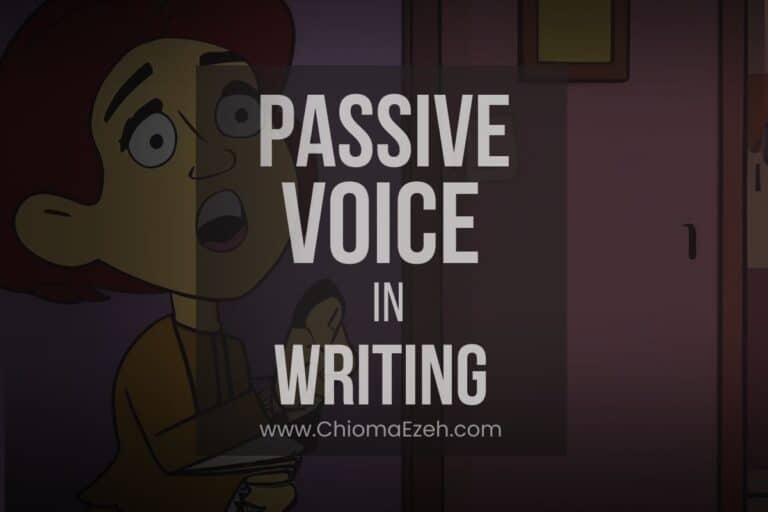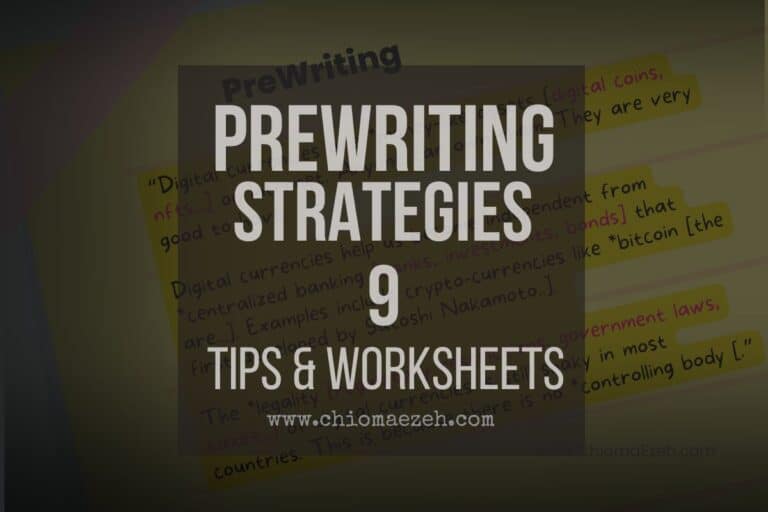Writing The First Draft Of A Book: 12 Tips For A Quick Process
Writing the first draft of a book can be daunting. This is one stage of the writing process that arguably matters more than any other. Without it, there is no book to edit or publish.
You are here because you presumably want to finish your book. And I understand, you may feel overwhelmed with all the ideas swirling in your head and unsure how to translate them onto paper.
But writing doesn’t have to be so hard! This guide is going to give you techniques for writing the first draft quickly and easily, along with exercises. Now, let’s get started.
Let’s Talk
Are you a writer aspiring to pen a masterpiece that never fails to captivate? Look no further. Reach out to us and uncover how we can help you to take your writing to unprecedented heights!

What is the First Draft in writing?

You might sometimes hear people speaking of a “rough draft”. It is the exact same thing as the first draft. The first draft is your first attempt at completing a manuscript. In most cases, these are not polished or edited.
The first draft of a writing project is clearly defined as the initial version of your written work. It is typically the most basic form of your piece and provides a foundation to build upon. The first draft should be broad and unrefined, taking shape as you continue to add more details, facts, and thoughts.
The first draft is usually only meant for your eyes. Not even your editor gets to see it. The only time another person has to view your first draft is if you are working with a co-author.
After completing the first draft, you can go back and revise it to make sure everything is accurate and clear. The revision process typically includes adding more details, changing any errors, and possibly even subtracting parts of the original text.
Why is writing a first draft important?

There is no book without the first draft. If you cannot create the first draft, then you’ve all but wasted your time.
Writing a first draft is important because it gives you an opportunity to get your ideas out on paper. It also provides a foundation for the rest of your writing. By writing the draft, you can easily organize them into a structure that will help make further revisions easier.
The first draft also gives you a chance to make mistakes and learn from them, which can help make subsequent drafts more accurate and effective.
Writing a first draft is the first step in creating any good piece of writing, so take your time and do it right. Other reasons why you need to write a first draft include:
- The first draft is the foundation on which everything else is built.
- The first draft gives you an opportunity to pen down all your thoughts, without worrying about grammar, facts, etc.
- Finishing the first draft means you have a “rough” book – that you might need to edit, revise, or change.
- A first draft alerts you to the worthiness of your idea – if you simply can’t finish the first draft, then it’s time to go back to the drawing board.
- Writing the first draft is satisfying – just looking at a draft, and knowing you actually wrote a book from beginning to end is great for your self-confidence.
How do you write a first draft quickly?
Quickly writing a first draft is quite easy. All you have to do is write freely. No, seriously, but that’s true.
The key to writing a first draft quickly is to focus on getting your ideas down on paper, rather than worrying about grammar or sentence structure. Start by brainstorming and outlining your topic, then jotting down any points you have in mind. Thereafter, start writing without stopping until the entire first draft is complete. Set a timer to prevent distractions and take breaks when needed to clear your head and refocus your thoughts.
The main aim of the first draft is to get writing. If you are in a rush and don’t have time for other techniques that we will discuss shortly, just write. Pick any topic you want to work with. Get a pen and notebook or open a word processor, and write as much as you can about the topic.
You can come back to add and remove items, move around paragraphs, and revise and edit, but the bulk of your work will be done. There are several techniques writers use when creating the first draft. That said, the only one that really matters is writing freely.
Steps To Writing the First Draft Quickly & Easily
While putting pen to paper, and writing down whatever comes to your mind is all that’s required of you at this stage, it’s not an elegant solution.
Yes, there’s no need to worry about editing, correctness, and all that when creating your first draft. That said, there are several techniques you can use to make sure your first draft is easy to work with in the other stages of the writing process.
Use these techniques when writing the first draft of your book:
- Organize and set deadline
- Pick your tools
- Find the right location
- Keep a notebook/text editing software at hand
- Identify your audience
- Outline
- Decide how you will get ideas
- Write freely
- Flesh out the main points
- Don’t Edit
- Don’t overthink it
- Take breaks when needed
Here are the steps in detail.
#1. Organize and Set A Deadline
Starting a draft is great. Many authors never reach this stage. Just as important as starting, is finishing. You need to have a complete first draft at some point.
Setting a deadline is one of the best ways of making sure you finish. Deadlines help you stay focused. They also prevent you from procrastinating. If you already have a deadline from your publisher/organization, set yours for a few days beforehand to give yourself more time. If the official deadline is ten weeks from now, make yours seven and a half weeks from now.
If you plan to self-publish, give yourself an imaginary deadline. You can also break down your deadline into smaller bits. Pen down the date you want to have finished writing a specific portion or chapter of the book in your calendar. When doing so, be realistic and allot longer sections more time.
Failing to have deadlines could leave you in a situation where you never finish writing (can take even years) because there is no internal pressure.
I highly recommend you set a deadline, even if you haven’t been given any by your publisher. That said, be gracious to yourself. The last thing you want is anxiety getting in the way of your writing. And this can hamper progress or even cause writers’ block.
Remember that deadlines can be just a suggestion, nothing more. If you suspect you will miss a deadline set by your publisher, immediately contact your editor. Publishing houses usually understand, because you are not the first or last writer to miss a deadline.
Also, remember to always time yourself when writing. Check how many words you’ve written after every session. This will give you an idea of your average writing speed, which can help you better navigate deadlines in the future.
#2. Pick your tools
Every trade has its own tools. Writing is no different. Each tool will depend on the author and type of book being written. For instance, a children’s or picture book might require more specialized graphic design software. Other factors like your personal preference, budget, and technical skill will also determine which tools you choose.
Google Docs is a favorite among writers. It is free and makes it easy to share the manuscript with others, like editors or co-authors. In fact, it is the best free tool if you are working with colleagues on the same project. Another advantage of this software is that it is web-based, meaning it works on any operating system that has a web browser.
Scrivener and Microsoft Word are other applications popular with writers. Scrivener has a powerful interface that allows you to create chapters and sections. Meanwhile, Microsoft Word is trusted because it has been the dominant word processor of choice for decades.
This step is an important one. You don’t want to discover you need to purchase Scrivener on the day you want to start writing, and even when you don’t have the budget for it. You can check out my top recommendations on the best writing apps to get started.
Fancy doesn’t always mean good. While many apps have flashy features, you can probably do without them. Microsoft Word or Google Docs is good enough for most types of book writing. However, if you want more convenience, focus, and other power features needed in story planning and development, you might want to go with other writing tools.
#3. Find the right location
Where you write can make a whole difference in how your project turns out. Pick a place that is conducive to working, a place you know can boost your creative juices.
While I find that I write faster and better on my phone while lying down, some writers prefer to work in a quiet park. Others prefer loud and noisy cafeterias. And yet others, who obviously have the funds, prefer writing on boat cruises or at exotic holiday destinations 🙂
However, it’s not always about what the writer wants. What your book needs also play a part. A book requiring lots of research should perhaps be written in a library, or a place that has a good internet connection. If you are working with a co-author, the two of you might need to meet and work in the same room, etc.
Wherever you end up writing, try to make it as comfortable as possible. Make sure you are not working in a place you hate (gosh, I hate the park).
Writing in an environment that is not conducive to your work could have a direct impact on the quality of your book. So choose wisely.
Remember to take health considerations into account. For instance:
- Make sure your workstation is ergonomic, to prevent or worsen carper tunnels syndrome.
- Pick a place that has good lighting, to prevent digital eye strain
- Have sunscreen/warm clothes at hand, depending on the weather, if you prefer working outdoors.
#4. Keep a notebook/text editing software at hand
Writing comes from your mind. And your mind is not a magic tap that can be turned on and off at will. Ideas will always flow through your brain at unexpected times. What do you do when those ideas can help you with your book?
Mary is writing a novel featuring a detective who is searching for a dangerous criminal. She comes across a bridge that is perfect for the detective to have the final confrontation with the criminal. Mary runs into old friends she hasn’t seen in a while at the gym, and they catch up for hours. She has already forgotten about the bridge when she opens her laptop to continue with her novel on Saturday morning. If only Mary had noted down that thought.
Always keep a notebook with you wherever you go. And it doesn’t have to be a physical notebook. You can use electronic notebooks or download a note-taking app on your phone. Jot down any idea that comes to you when you take a walk, take a shower, drive the kids to school, or do any other activity.
Chances are you will forget the idea if you don’t note it down. Even if you do not forget, you might end up remembering it incorrectly and leaving out important details.
A paper notebook has been the standard tool for this step for quite a while now. Thanks to technology, you now have access to even more convenient tools. Most phones now come with dictation software. So you don’t even have to type your quick idea – just dictate it to your phone to write it for you. You could also simply record a voice memo on your device.
#5. Identify your audience
This is a step that should have been either done during the prewriting or outlining stage. But if you haven’t done it yet, it’s time to start identifying your audience.
Your audience determines what you are going to write, and how you are going to write it. For instance, a book introducing software development to beginners will not contain Ph.D.-level concepts. Similarly, while fiction books for adults might contain graphic violence, this will never be allowed in a book for seven-year-olds.
Ask yourself the following questions:
- What is the average age of my audience?
- What does my audience know?
- What are they unfamiliar with?
- What do I want readers to know after reading the book?
Incorrectly identifying your audience means you will produce a book that is not appropriate for your reader. Imagine a book teaching elementary school-level mathematics opening with advanced algebraic expressions.
It might be a good idea to find out what your target audience thinks about the topic. Places to find such information includes:
- surveys
- social media
- industry conferences
- books written by other authors in the same field
- online forums such as Quora and Reddit
Check out our comprehensive guide on How to identify your audience in writing where you learn all these and more in detail.
#6. Outline
This is another step you should have ideally done during the planning stage of the writing process. You can still do it just before starting your draft, however.
An outline is a detailed description of what you are going to write about. Pick up any book you have, and flip to the contents page. All you can see is just chapter titles and section headings. That’s exactly what a typical outline looks like. In fact, the table of contents you are looking at is probably a truncated outline.
Outlines can be so extensive, they indicate what each paragraph is going to discuss. They can also be minimalistic and only show the points and sub-points/chapters and sections.
For fiction authors, an outline should include a scene-by-scene description of events in your novel. Not having an outline simply means you’re writing blind. Remember what we said about deadlines? You won’t even be able to set deadlines since you have no clear-cut plan for what you’re going to write.
You might be interested in learning more about How to Write effective outlines for your book. We discussed practical tips, examples, and worksheets to get you started.
Outlines are compulsory for most non-fiction authors. Either your publishing editor or supervisor will ask to see your outline before you start writing. However, outlines are optional for fiction authors. In fact, some writers work better without outlines. Such authors are still recommended to outline the beginning, middle, and end at the very least.
#7. Decide where your ideas will come from
Yet again, this is a step that should have been covered during prewriting or outlining. But just in case you missed it, here it is. You need to decide where you will get material for your book. This is not really an issue for fiction authors. Novel content comes from the mind, and that’s it.
Things are a bit different for non-fiction writers. Non-fiction deals with facts. The facts you’re going to include in your book will have to come from somewhere. But where? Here are places many authors find content/ideas:
- library books
- internet resources
- interviews
- experiments and observations
Without your ideas, you don’t have a book. If you can’t decide where your ideas will come from, it’s unlikely you’ll ever get started writing let alone finish.
All ideas are not the same. Always check if your source is credible. Do this by investigating the author’s previous work, antecedents, affiliation, and references. Also, check if the work has been peer-reviewed. Remember to cite and acknowledge every source you use. Not doing so is plagiarism, a crime punishable by law, and the highest disgrace in academia.
#8. Write freely
It’s now time to start drafting your book at last. The most important thing is to write as much as you can. Nothing else matters.
Make sure you are comfortable and write anything that comes to your mind. It goes without saying, whatever you write should be related to your topic. Don’t write about 18th-century art if your topic is video editing software.
You might be tempted to go back and edit as you write. Do no such thing. Just keep on writing. Slowing down here could potentially cause you to lose your momentum, and eventually, experience writers’ block or stop writing.
Losing your work and starting over is the last thing you need. Remember to take general common sense precautions such as:
- Keep food and drinks away from your workstation to prevent accidents.
- Back up your work to a separate device at the end of each writing session.
- Send yourself an email with the day’s work attached, so you have another backup online.
- If you are writing by hand, take pictures after every session, and do as per the previous two points.
- Regularly save your work e.g., the Microsoft Word shortcut for this is Control + S.
#9. Flesh out the main points
Do you have an outline? If the answer is yes, then congratulations. You just made your work a whole lot easier. All that’s left for you to do now is fill in the necessary facts and details, depending on how extensive your outline is. Many authors who use outlines actually take less time drafting than they do at any other stage.
Aside from making your work easier, outlines help you stay on track. Not having an outline is a recipe for disaster down the road.
It might be a good idea to create a new document for each chapter. You can then copy and paste the points and sub-points belonging to that chapter into the new document. Leave blank lines below each point and sub-point. This is where you can fill in whatever is supposed to go in there.
Remember to update the entire outline if you make changes as you draft. Otherwise, you might end up creating contradictions, or end up confusing yourself.
#10. Don’t Edit
Seriously, don’t do it. It doesn’t matter how tempted you are.
Editing is a lengthy process. You might eventually lose your momentum before you can get back to writing. That’s why you need to leave editing for later stages.
That said, there’s nothing wrong with correcting a factual or spelling error in a previous paragraph. What is discouraged is going through your manuscript with a fine toothcomb before you are done drafting.
It is better to make a note of edits you want to implement when you notice them. You don’t want a situation where you forget to edit that specific section either.
That said, there are authors who simply cannot continue writing without editing, no matter how hard they try. Most of these rules are not set in stone, so go ahead and edit if that’s typical you. However, try to fix a chapter at the very least, before you start editing it.
#11. Don’t overthink it
This is closely related to the previous point. Yes, it’s true you need to stay on point. But that doesn’t mean you need to over-analyze your work just yet. This is not yet the time to start checking if paragraphs smoothly flow, if you’ve used the proper formatting, if your writing uses proper citations, etc.
Just write.
Overthinking and trying to fix small issues could lead to you taking longer than expected to finish the project.
Once again, these rules are not set in stone. If overlooking small details causes you so much anxiety, such that you can’t continue drafting, then fix those issues. Try to find strategies you can use to improve your speed if you are such an author. For instance, you might benefit from much more extensive outlines.
#12. Take breaks when needed
A tired author makes so many mistakes, requiring double or more the amount of time and effort for editing. Take a break when you’re tired and especially when you need to.
In fact, you can step away from your project for days in order to refocus and recharge. If you think that such a break might interfere with your deadlines, check with your editor.
It might be a good idea to factor in time for potential breaks after each chapter in your deadline. I find that I often re-energize my creative juices whenever I stay away from my work for 2 to 3 days. Anything longer seems to be counterproductive as I may become demotivated or hit with writers’ block
Finishing a manuscript is important. But it is not more important than your well-being.
Breaks are not only important during the drafting stage. They are also important, maybe even crucial, when you are done. Walk away from your project for at least a week once the first draft is done.
Drafting Activities & Worksheets
There is nothing better than an exercise to check if you’ve fully grasped a concept. That’s why drafting activities and worksheets are a great way to practice writing. Therefore, to be sure you have a thorough understanding of writing the first draft, I have created a few activities and worksheets.
Do the following:
- Research at least five writing tools. Choose the one you prefer. Justify yourself.
- Who do you think is the audience the author of your favorite book was targeting? Why?
- Pick any idea and develop an outline for it.
- Start writing, using your outline from 3.
- Pick three ideas. Set your timer for 15 minutes. Freewrite about one of the ideas until your timer goes off. Repeat the process for the other two ideas.
- Pick an idea of your choice. Write the first draft of a short piece, using the twelve techniques discussed in this guide.
What are the five basic elements of a first draft?
Every first draft should have certain elements. You know you are on the right track if your draft has the following:
- an introduction
- a thesis statement
- topic sentences
- supporting sentences
- a conclusion
An introduction is the entryway to your work. Without it, it will be hard for everyone, maybe even you, to know what you are writing about.
A thesis statement is a point you are trying to prove/deal with. Without a thesis statement, your writing is just a series of unconnected and meaningless paragraphs.
A topic sentence opens each point paragraph and connects it to the thesis. You have a serious problem on your hands if you can’t link your paragraphs back to the thesis statement.
Each topic sentence is followed by supporting sentences. These are ordinary sentences that help you make your arguments.
After you’ve written everything, you will of course round it off with a conclusion that ties into the thesis statement.
FAQ’s
Do First Drafts Always Have To Be Sloppy?
That said, first drafts don’t always have to be sloppy. Some writers are so good and so well-practiced at their craft, they produce near-perfect first drafts. And yet other writers cannot create unedited drafts. Doing it causes them so much anxiety, they cannot properly continue working until all errors are fixed.
Here’s a tip: the more detailed your outline is, the narrower your margin of error is in the first draft.
Can I Publish My First Draft?
Publishing first drafts probably means you’re publishing mistakes. And there’s nothing as embarrassing as being known for publishing books filled with errors.
How Long Does My First Draft Have To Be?
That said, if your draft’s word count is very different from the range of your target word count, you might need to reconsider a few things. A draft that’s too long might be indicative of an author who is not focused and is writing all over the place. On the other hand, if your draft is too short, it might mean you haven’t done enough research about your topic, or that the topic in question is not broad enough to write a book about.
You should only be concerned if the differences are huge. For instance, if you are aiming for 25,000 words, but end up with 93,000 words. Or you are aiming for 30,000 words, and your draft is 2,500.
Can I Show People My First Draft?
In rare cases, your editor or literary agent might ask for your rough draft. You can give it to them. Your co-author is also another person you can show your first draft.
Are There Any Compulsory Rules When Creating The First Draft?
Final Notes On Writing the first draft
The first draft is the most important part of a book. There is no book without this process. Techniques to improve the effectiveness of creating a first draft include setting a deadline, choosing the right tools, knowing your audience, writing freely, and taking breaks when needed.

![How to Overcome Writer’s Block: 7+ Tips That Work [Exercises]](https://chiomaezeh.com/wp-content/uploads/2023/01/How-to-overcome-writers-block-768x512.jpg)

![What Is Gore In Horror Writing? [Definition, Examples]](https://chiomaezeh.com/wp-content/uploads/2023/05/what-is-gore-in-horror-1-768x512.jpg)

![How to Develop Your Writing Style As An Author [7 Tips]](https://chiomaezeh.com/wp-content/uploads/2023/03/how-to-develop-your-writing-style-768x512.jpg)
